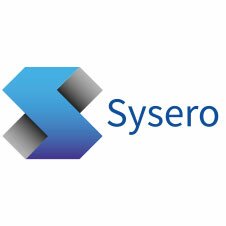Sysero: Best practices for managing a low-code project
Low-code software is quickly gaining ground in the legal sector, providing lawyers with a quick and easy way to build custom applications. This intuitive technology lets lawyers who know nothing about coding to create custom automated processes to meet their needs with limited training and effort. Gartner estimates that by 2024, low-code application development will be responsible for more than 65% of application development activity across all sizes of businesses.
While low-code technology might provide an array of benefits when it comes to productivity, it must be managed like any other business initiative. Far too many firms try low-code tools expecting them to magically solve their challenges. However, the firms that find success with low-code applications are the ones that dedicate the appropriate time, resources, and effort to effectively project manage the development and deployment of their low-code solutions.
At Sysero, we’ve worked with leading law firms around the globe to design and implement low-code solutions. Here, we share our best practices for effectively project managing a low-code project, from beginning to end.
Planning and Initiating a Low-Code Project
To ensure your low-code project has optimal success, it’s crucial to follow basic project management principles and create a project management plan. A project management plan will help you plan, organise, and manage the resources and people needed to successfully launch your low-code project.
Before you launch into creating a project plan, you need to determine what you’re building and why you’re building it. Ask yourself what problem are you trying to solve? What does the application need to do to effectively solve your problem? How will your technology deal with security? The questions can be nearly endless, but it’s critical that you have a clear need and solution determined before kicking off your project.
Once you’ve identified your business case, it’s time to put together a clear roadmap for the project. During this phase, you’ll define clear roles and responsibilities, clarify how the project will be completed, and establish clear timelines and expectations. This is by far the most time-intensive part of the project management process, but also the most important. As you create your project plan, keep in mind the following:
- Who are the main stakeholders?
- Who will be part of your project team?
- What risks have you identified?
- What is your proposed timeline and approach?
- How will you measure the performance of your project?
Delivering a Low-Code Project
Once you’ve created your project plan, it’s time to put it into practice. You’ll want to create a framework for keeping track of your project, whether it be a web-based project management tool or Microsoft Project.
With low-code projects, it’s really important to engage with your vendor or engineering team to ensure that the application will work in the way you want. To allow developers to work quickly, provide them with a clear requirements’ description that outlines exactly how you’d like the low-code technology to function. For example, Sysero’s low-code workflow application can be customised in a multitude of ways. We work with each client to understand their unique internal processes and requirements, so that we can build them a low-code solution that uniquely solves their challenges.
On the other hand, you should also aim to include non-technical users as part of the project. By getting your end users to be part of the development process, you’ll ensure that your lawyers can use the application as required.
Be sure to schedule in regular touch bases and project review meetings with your key stakeholders to ensure that your project stays on track and potential risks are identified before they become problems.
Closing a Low-Code Project
Once your low-code solution is developed, it’s time to roll-out it to your lawyers and staff. Preparation, communication and education are key to a successful internal launch and high user adoption.
While low-code solutions are inherently intuitive, it’s important to train your lawyers and staff on how to get the most out of your new solution. Spend the time to educate non-technical users on how best to use the tools and the benefits they can provide. Making it clear to end users how low-code applications positively affect their daily workflows is key to getting their buy-in.
Another key element to ensuring the longevity of your low-code solution is defining and documenting how lawyers and staff can use the tool. Rules are a crucial part of workflows, so common naming conventions, review procedures, and support request guidelines can be extremely helpful. Make these documents available internally, so that lawyers and staff can quickly find the information they need when required.
After successfully launching the new tool, hold a project debrief meeting to assess its success and identify any potential risks. Use the KPIs outlined in your project plan to measure the overall impact of the project, and refer to lawyers’ and staff’s feedback to determine any changes required.
Conclusion
Low-code applications are a significant time-saver for today’s lawyers, but the proper introduction of a new tool requires the right preparation and planning. In the end, the success of your low-code project comes down to a solid project management plan, effective collaboration between teams, and the right low-code technology partner.
The right low-code solution lets your lawyers and staff quickly and easily create custom applications on demand. It helps power productivity, ease the risk of error, and enhance the client experience. To learn how Sysero can help your law firm unlock the power of low-code technology, get in touch with our team.



